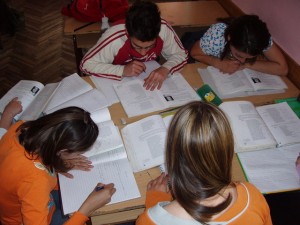What you need to know about plagiarism at university
 I was interested to read some topical discussion the other day about plagiarism, the detection systems used within UK higher education institutions (HEIs) and how certain universities such as the University of Glasgow are considering moving away from the most popular service, California based Turnitin, due to system outages and rising costs.
I was interested to read some topical discussion the other day about plagiarism, the detection systems used within UK higher education institutions (HEIs) and how certain universities such as the University of Glasgow are considering moving away from the most popular service, California based Turnitin, due to system outages and rising costs.
For those new students who are starting university this autumn or parents of children who are heading off to study at a higher education institution, you may be interested to know that plagiarism within UK universities has been a very hot topic in recent years. With 98% of the UK market, Turnitin is the most popular “plagiarism detection system”, followed by Safe Assign (developed by the learning management systems provider Blackboard) and the new “kids on the block” and now seen as an alternative to Turnitin is URKUND.
With previous experience of managing such systems, providing workshops and lectures about e-assessment and having co-developed an on-line course about good academic practice, I’m keen to share my experience and knowledge.
Within the UK, most HEIs have been using “plagiarism detection systems” for approximately 8 years to check electronic copies of students’ work e.g. essays, reports and computer code. These submissions are checked against information records within a large cloud-based database:
- other student work from the same institution
- other student work from other UK universities
- current and archived web pages
- electronic books and journals (certain content publishers)
- library repositories
When a piece of student work is submitted to Turnitin for example, the result is a percentage score of matched text and an originality report highlighting the matched text with the student’s work and the matching sources.
Not all institutions use the same policies however, when it comes to how these systems are used within the academic assessment process. The 3 main ways used are:
- as an openly available tool throughout all years of study, to allow students to draft work, submit to the system and check for matched text & sources, re-submit to the system until a low percentage score is achieved
- as point 1 above, but with limited availability e.g. up to the 2nd student assignment or the end of the particular term or year
- as a “compliance and punishment tool”, used from the very start of a student’s studies or after a specific period of time as described in point 2
Therefore, if you are a student starting university, I would suggest you find out what your institution’s policy and procedures are when it comes to checking your coursework, assignments etc for plagiarism. Better to know beforehand and not fall foul of the academic policies in place, as sometimes ignorance isn’t an excuse. Also, find out what student services are available to you as there may be a number of related workshops available to you from your institution’s library, student associations or learning support unit.
Author: Raymond J Moir, Formative Learning
18 September 2015
Free image from http://www.freeimages.com/photo/students-1441602
